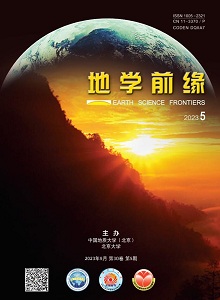The Fuyang River—flows through Handan, Xingtai and Hengshui areas of Hebei Province as a tributary of the Ziya River, confluencing with the Hutuo River at Cangzhou—plays an important role in the eco-environment and economic development of the Fuyang River Basin. Based on the 2000-2020 monthly MOD13A1 (500 m) dataset, the spatiotemporal dynamics of regional vegetation cover was analyzed by unary linear regression and Hurst index methods, and Pearson correlation analysis between the normalized difference vegetation index (NDVI) and temperature/precipitation was performed. In combination with geographical analysis by geographical detector method, natural factors such as precipitation, temperature, vegetation type, soil type and elevation, and human factors such as land use type, population density and GDP were evaluated through statistical analysis for their impact on regional vegetation cover. Furthermore, control-factor detection, two-factor interaction detection and risk area detection were carried out. Ultimately, the impact of each control factor on NDVI and the optimal value of each control factor for vegetation growth are calculated, which provided a reference and basis for ecological protection and sustainable development in the region. The results showed that (1) the regional vegetation cover had an overall increasing trend between 2000-2020, and the NDVI, Slope index and Hurst index annual means were 0.76, 0.0005 and 0.48, respectively. According to spatial superposition analysis, the regional vegetation-cover changes were mainly attributed to man-made improvements. (2) There was a positive correlation between NDVI and precipitation annual means, while NDVI interannual trends were more closely related to precipitation than temperature. (3) The control factors were ranked according to their influence on NDVI as precipitation > population density > GDP > land use type > soil type > temperature > elevation > vegetation type. The first three factors, with q values greater than 0.2, were considered the main control factors of regional vegetation cover. (4) The impact of a two-factor combination was significantly higher than that of a single factor, showing a two-factor enhancement effect; the precipitation-population density combination, with a q value of 0.59, had the highest impact, while combinations of precipitation and other factors had dominant effects. (5) Based on risk area detection, areas with precipitation of 464.73-500.03 mm, temperature of 15.14-15.23 ℃, altitude of 3-133 m, population density of 551.36-2059.96 people·km-2, GDP of 1756.77-7507.15 yuan·km-2, and an eco-environment with cultivated vegetation, nursery soil and cultivated land, were most favorable for vegetation growth.

